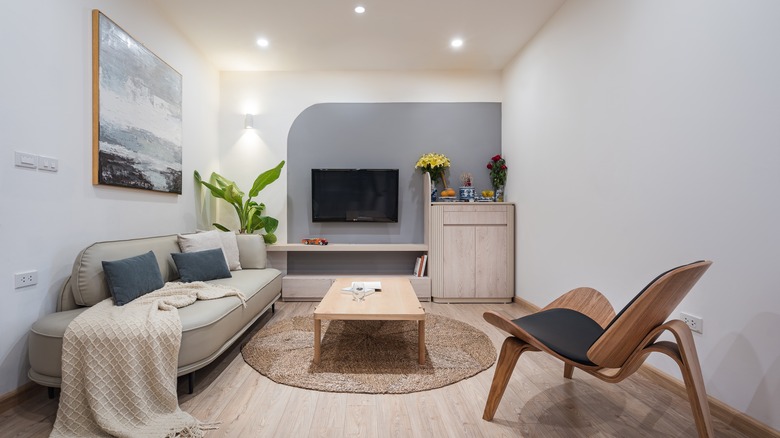How Joanna Gaines Seamlessly Blends Existing Built-In Features Into A Design
When designing a space, it's normal to focus on what you don't like about it and what you can't wait to change. Changes aren't always as easy as a new carpet or coat of paint, however, and there can be features that you are basically stuck with. For Joanna Gaines, it helps to look at such features as friends instead of foes. One of her mini renovations presented her with an older built-in dining room cabinet, and she blended it seamlessly into the new design by making it a core part of the space and replicating its shape in other places. "I was drawn to an original built-in that was tucked in the corner of the dining room. It featured a simple scalloped detail that I thought was really interesting, so we let that be our north star of the project, mirroring that shape elsewhere in the home. I also wanted to make it a focal point in the dining room," she explained on the Magnolia blog.
Sometimes the concern with keeping certain built-in features is that they waste space or date the house, but one clever hack that will improve the value of your house is doing a minor refresh. A dated feature like a sunken living room, for example, can be updated to contain just two or three colors so the whole space blends together. For a "wasted space" like a random nook in the wall, floating shelves will make it an additional storage area, instantly giving it relevance.
Make it a focal point of the room
Dealing with an unwanted built-in typically involves covering it up. For example, some bizarre features that you might find in an old home include telephone shelves and food elevators, and it's easy to just block them or fill them in to modernize the home. However, Joanna Gaines embraces the interesting feature in the space and makes it a focal point. "We painted in the same dusty blue hue as the ceiling and trim to help draw your eye to it," she explains (via Magnolia).
Something that makes this so successful is that the colors aren't as striking as the old design where the built-in was painted stark white and stuck out more. Her design feels a lot more integrated. The wallpaper adds a pop while the built-in flows on the wall seamlessly. Even the vintage-style pieces inside it help to maintain that muted but charming look. The feature already had the potential to be the focal point so it didn't need a loud color and worked fine in cohesion with the ceiling and trim.
Mirror the shape in other spots around the home
"I'm a firm believer that every home has that special something—and good design isn't necessarily a matter of starting over, but finding ways to tell more of that unique story," explains Joanna Gaines on the Magnolia blog. One tip that's helpful when decorating a new home from scratch, that you can also use for redecorating, is to use the existing features as inspiration for the rest of the space.
She does this in this project by incorporating curves in the other rooms as a nod to the scalloped detail of the built-in. In the breakfast nook, the table and shelf have rounded edges, and in the living room and the dining room, curved mirrors, light bulbs, and chairs carry on the shape. This way, the built-in doesn't look out of place and all the spaces maintain the playfulness of the scallop detail. All of this shows that seamlessly blending existing built-in features into a design is a lot about seeing how to get the best out of them for what they are instead of hiding them or trying to force them into something else.

